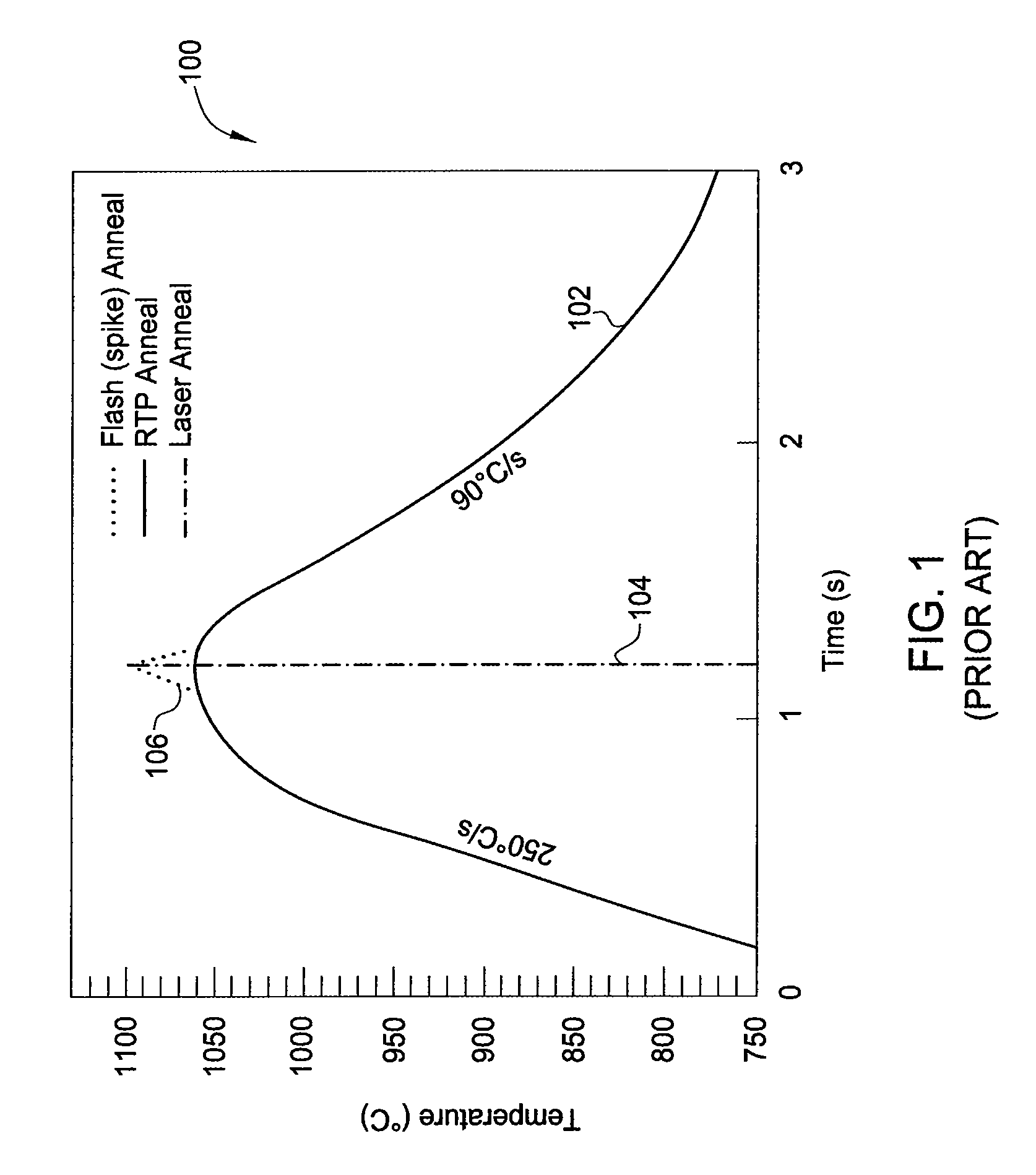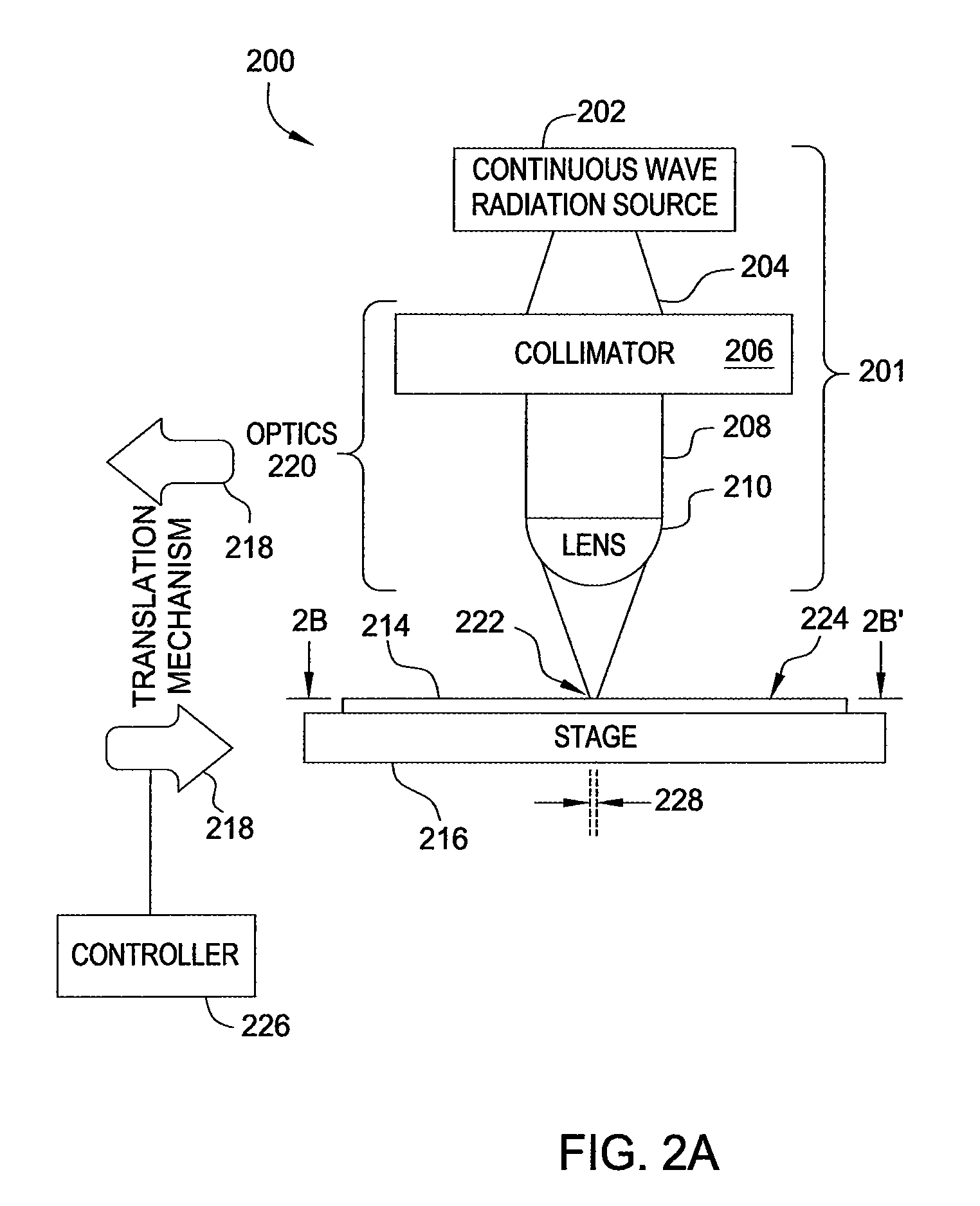Automatic focus and emissivity measurements for a substrate system
- Summary
- Abstract
- Description
- Claims
- Application Information
AI Technical Summary
Benefits of technology
Problems solved by technology
Method used
Image
Examples
Embodiment Construction
[0038]Embodiments of the invention generally relate to thermal processing of substrates, and, more specifically, to apparatus and methods for automatically focusing radiation onto a substrate during thermal processing.
[0039]FIG. 2A is a side view of an apparatus 200 for thermally processing a substrate, according to an embodiment of the invention. Thermally processing a substrate means conducting any thermal process that requires the characteristics of the invention described below. Embodiments of such a thermal process may include thermal annealing of substrates or thermal processes used in chemical vapor deposition (CVD), both of which will be described throughout the remainder of the figures.
[0040]The apparatus 200 comprises a continuous wave electromagnetic radiation module 201, a stage 216 configured to receive a substrate 214 thereon, and a translation mechanism 218. The continuous wave electromagnetic radiation module 201 comprises a continuous wave electromagnetic radiation ...
PUM
| Property | Measurement | Unit |
|---|---|---|
| Nanoscale particle size | aaaaa | aaaaa |
| Wavelength | aaaaa | aaaaa |
| Temperature | aaaaa | aaaaa |
Abstract
Description
Claims
Application Information
 Login to View More
Login to View More - R&D
- Intellectual Property
- Life Sciences
- Materials
- Tech Scout
- Unparalleled Data Quality
- Higher Quality Content
- 60% Fewer Hallucinations
Browse by: Latest US Patents, China's latest patents, Technical Efficacy Thesaurus, Application Domain, Technology Topic, Popular Technical Reports.
© 2025 PatSnap. All rights reserved.Legal|Privacy policy|Modern Slavery Act Transparency Statement|Sitemap|About US| Contact US: help@patsnap.com



